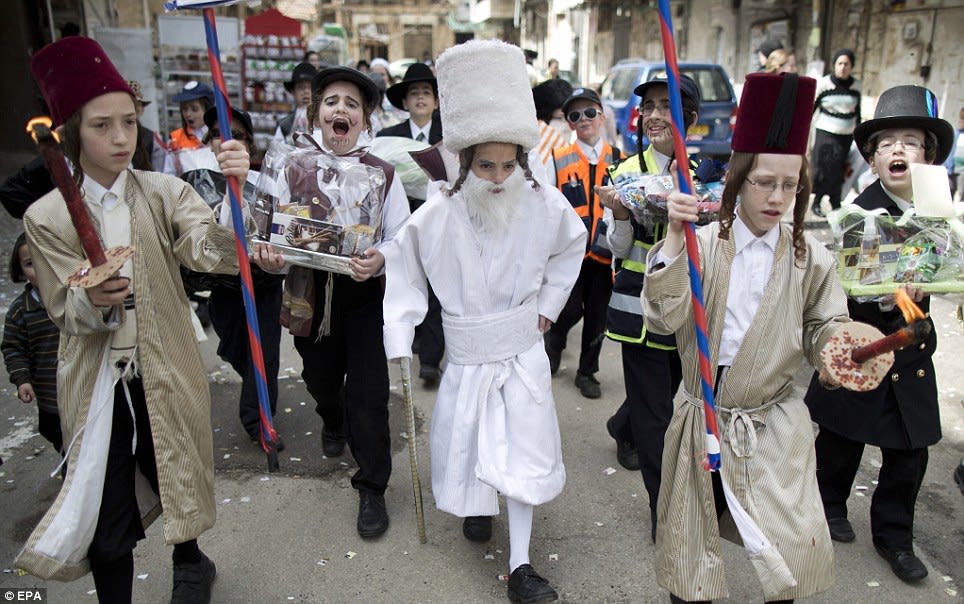Purim is one of the most joyous holidays of the Jewish calendar. On the 14th of Adar we celebrate a heroic victory over those out to destroy us, by recounting how in ancient Persia a plot to annihilate the Jews was thwarted by Esther and Mordechai. Among traditional observances, dressing up in costumes and masks is a vivid highlight. While children often masquerade as characters from the Book of Esther, adults can also indulge their whimsy by wearing funny outfits that disguise their identities. This folk custom based on hidden identity may have biblical origins, and a historical forerunner of the Purim costume parade comes from Italian Jews of the 15th century. Everywhere, decorum is replaced by mirth, humor and gaiety.
Amidst the Satmar Hasidim of Williamsburg, Brooklyn, who rarely expose a boisterous or zany side, signs of the coming merriment begin to appear in advance of the holiday. A local hardware store arranges a row of comical, life-like rubber masks in its window display; other shops advertise their costume and gift basket collections at closeout prices; and bakeries offer several types of hamantashen. On Purim day the whole community turns out in full holiday finery on their way to deliver mishloach manot or attend a seudah. A mark of the times is the number of little boys in military and camouflage gear. Pint-sized policemen, firemen, cowboys and naval officers also promenade alongside miniature “Rebbes” with long cotton beards and white stockings. For the girls, rag dolls with flaxen braids and rouged cheeks are very popular, and Queen Esther’s royal garments, princess crowns and bridal gowns are perennial favorites.
But when the masks come off and the laughter subsides, the message of Purim still resonates: Jewish unity, faith and courage will ultimately prevail over evil, as they have in the past.
KITTY KATZ is a documentary photographer and writer whose work is inspired by the vast panorama of history and cultural diversity in her native New York. Her photographs and articles have been published and exhibited in the U.S. and internationally. Following a long tradition of street photographers whose images of everyday life illustrate human nature and changing times, the current series on Williamsburg is part of a larger visual exploration of Jewish New York. Please visit Katzunlimited Online Gallery www.geocities.com/katzunlimited.
The words of this author reflect his/her own opinions and do not necessarily represent the official position of the Orthodox Union.

